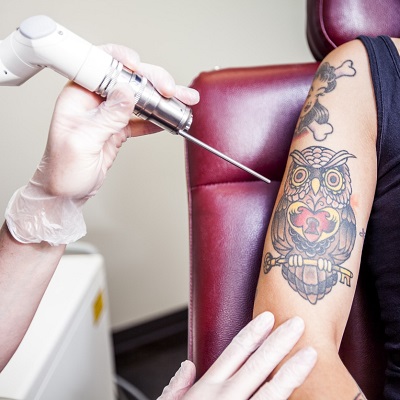Introduction
Tattoos have been a form of self-expression for centuries, often holding deep personal significance. However, as tastes and life circumstances change, many individuals find themselves regretting their ink. This has led to an increasing interest in tattoo removal, particularly through laser technology. Best Laser Tattoo Removal Oman is a common method, renowned for its effectiveness and precision. This article explores the mechanics of tattoo fading through laser removal, the stages of the process, factors influencing fading, and what individuals can expect over time.
The Science Behind Tattoos
Before delving into the removal process, it’s essential to understand how tattoos are created and why they are permanent. Tattoos are made by injecting ink into the dermis, the second layer of skin beneath the epidermis. The ink particles are too large for the body to eliminate naturally, which is why tattoos can last for years. Over time, the body’s immune system attempts to break down these ink particles, leading to natural fading.
How Laser Tattoo Removal Works
1. The Basics of Laser Technology
Laser tattoo removal employs focused light beams to target ink particles. The most common types of lasers used are Q-switched lasers, which emit energy in short bursts. This energy is absorbed by the ink particles, causing them to heat up and break apart into smaller fragments that the immune system can eliminate.
2. The Fading Process
The fading process consists of several key stages:
- Initial Treatment: After the first laser session, some immediate fading may occur as the body begins to break down ink particles. However, multiple sessions are typically required for significant fading.
- Immune Response: Following each session, the body’s immune system works to clear away the fragmented ink particles. This can take weeks to months, and during this time, the tattoo will continue to fade.
- Gradual Improvement: With each treatment session, more ink is broken down, and the tattoo fades further. Patients usually see noticeable improvement after 3 to 4 sessions, but the total number of sessions needed can vary based on ink colors, skin type, and tattoo age.
3. Aftercare and Its Role in Fading
Proper aftercare is crucial in the tattoo removal process. Following each session, patients are advised to:
- Keep the treated area clean and moisturized.
- Avoid sun exposure to prevent pigmentation changes.
- Follow specific instructions provided by the technician, which may include using ointments or bandages.
Factors Influencing Tattoo Fading
1. Ink Colors
Different ink colors respond differently to laser treatment. For example, black ink is the easiest to remove, as it absorbs all laser wavelengths effectively. In contrast, lighter colors like green and yellow can be more challenging and may require specialized lasers.
2. Tattoo Age and Size
Older tattoos tend to fade more quickly during removal, as the ink particles have already broken down somewhat over time. Additionally, larger tattoos often require more sessions due to the greater volume of ink.
3. Skin Type
The individual’s skin type can also impact the effectiveness of the laser removal process. Skin with more melanin (darker skin tones) may absorb more laser energy, which can complicate the removal process and may require the use of different laser settings.
4. Lifestyle Factors
Factors such as smoking, hydration, and overall health can influence the body’s healing response. A healthy immune system will more effectively clear away the fragmented ink particles.
What to Expect Over Time
1. Session Frequency and Duration
Most individuals undergo laser treatments every 6 to 8 weeks, allowing time for the skin to heal and the immune system to clear the ink particles. Each session typically lasts between 20 to 60 minutes, depending on the tattoo's size and complexity.
2. Long-Term Results
While many tattoos can be significantly faded or even completely removed, results can vary widely. Factors such as ink quality, technique used, and individual skin characteristics play a role in the final outcome. Some individuals may still see light remnants of the tattoo, often referred to as "ghosting."
3. Psychological Aspects
The psychological impact of tattoo removal should also be considered. Many individuals experience a sense of relief and newfound freedom after the process, while others may face emotional challenges as they part with a piece of their identity.
Conclusion
Laser tattoo removal is a complex but effective solution for those wishing to erase their ink. Understanding how the process works, including the science behind fading and the factors that influence outcomes, can help individuals set realistic expectations. While the journey to complete tattoo removal may take time and patience, many find it a worthwhile endeavor for reclaiming their skin and sense of self. With advancements in technology and a better understanding of skin and ink interactions, the future of tattoo removal looks promising, providing hope for those looking to start anew.





Comments